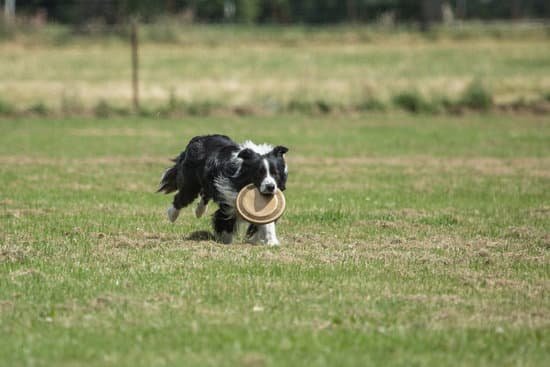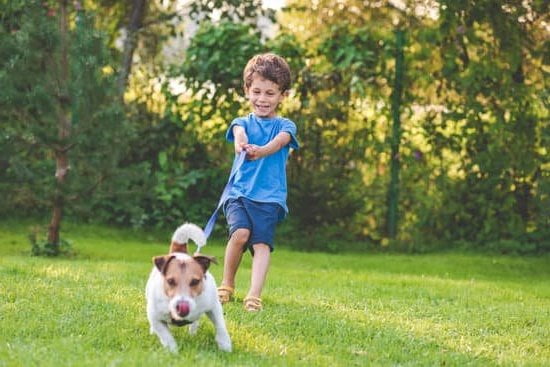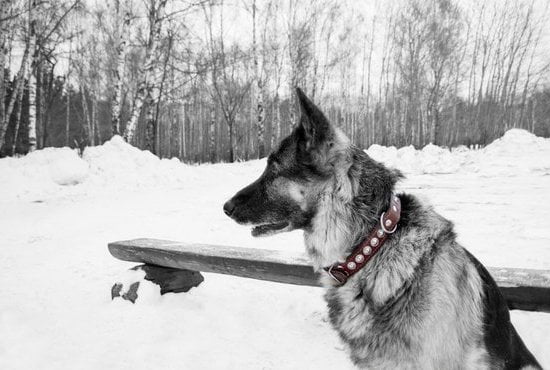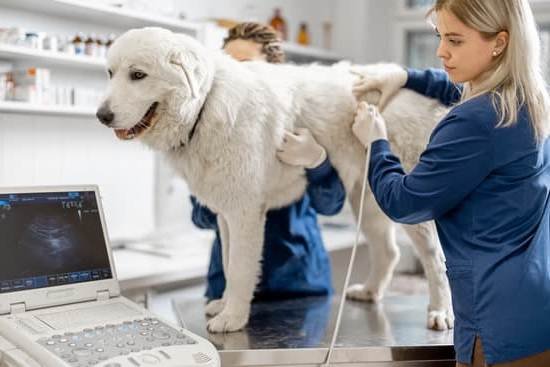Is your dog displaying signs of anxiety? From excessive barking and destructive behavior to panting and pacing, canine anxiety can manifest in various ways. This article aims to provide insight into the causes and signs of anxiety in dogs while offering practical strategies for training your furry companion to manage their anxiety effectively.
Understanding the root of your dog’s anxiety is essential in helping them overcome it. By exploring the underlying causes and recognizing the typical signs of anxiety in dogs, you can better tailor your approach to training and support.
Building trust and a strong bond with your dog is crucial for easing their anxiety. Establishing a solid relationship with positive reinforcement techniques can help your dog feel secure and connected, promoting emotional well-being and resilience. By implementing these valuable training methods, you can equip yourself with the necessary tools to support your anxious pup through their journey towards overcoming stress and fear.
Building Trust and Bonding
Creating a strong bond with your dog is essential in helping them manage their anxiety. By building trust and bonding with your furry friend, you can provide them with the support they need to feel secure and calm. Here are some effective ways to establish a strong relationship with your dog:
- Spend quality time together: Allocate time each day to engage in activities that your dog enjoys, such as playtime, walks, or cuddling. This will help strengthen the connection between you and your pet.
- Use positive reinforcement: Encouraging good behavior through positive reinforcement, such as treats, praise, or petting, can help boost your dog’s confidence and create a positive association with you.
- Respect their boundaries: Understand when your dog needs space and allow them to have moments of solitude when necessary. This shows them that you respect their needs and builds trust in the relationship.
By incorporating these practices into your daily routine, you can build a strong foundation of trust and bonding with your dog, which will ultimately aid in easing their anxiety.
It is important to understand that building trust and bonding with your dog is an ongoing process that requires patience and dedication. As you continue to nurture your relationship with your pet, pay attention to their body language and behavior to gauge their comfort level. An environment built on trust and love can significantly contribute to alleviating anxiety in dogs.
Positive Reinforcement Training Techniques
When it comes to training a dog to cope with anxiety triggers, positive reinforcement techniques can be incredibly effective. Positive reinforcement involves rewarding your dog for good behavior, which can help them feel more confident and secure in anxiety-inducing situations.
One of the key aspects of positive reinforcement training is using rewards such as treats, praise, or toys to encourage the desired behavior. For example, if your dog shows signs of anxiety but remains calm when exposed to a trigger, you can give them a treat or praise to reinforce that calm behavior. Over time, this will help your dog associate the trigger with positive experiences, reducing their anxiety response.
Another important aspect of positive reinforcement training for anxious dogs is consistency. It’s essential to reward your dog every time they exhibit the desired calm behavior in response to an anxiety trigger. This consistency helps reinforce the connection between the trigger and the positive experience, gradually reducing your dog’s anxiety over time.
In addition to using treats and praise as rewards, you can also incorporate activities your dog enjoys into their training routine. This could include playtime, walks, or other forms of mental and physical stimulation. By making training sessions enjoyable for your dog, you can further strengthen their ability to cope with anxiety triggers.
| Positive Reinforcement Techniques | Benefits |
|---|---|
| Reward-based methods | Helps dogs feel more confident and secure |
| Consistency in rewarding calm behavior | Strengthens the connection between triggers and positive experiences |
| Incorporating enjoyable activities | Furthers dogs’ ability to cope with anxiety triggers |
Creating a Safe Space
Dogs, like humans, can experience anxiety in various situations. It is essential to recognize the signs of anxiety in dogs, such as restlessness, excessive panting, trembling, and destructive behavior. Understanding the causes of anxiety in dogs is important before embarking on training to help them cope with it. Common triggers include separation, loud noises, travel, new environments, and other factors that disrupt their sense of security.
One effective way to help a dog manage their anxiety is by creating a safe space for them to retreat to when they are feeling overwhelmed. This safe space should be calm and comfortable, providing a sense of security and tranquility for the dog. Whether it’s a cozy crate or a designated corner with their favorite bed and toys, having a place to escape to can greatly alleviate their stress during anxious moments.
When training a dog for anxiety management, it’s crucial to make this safe space a positive and inviting environment. Encouraging your dog to use this area through positive reinforcement techniques will help them associate it with feelings of safety and comfort. By using treats, toys, or praise when they go into their safe space voluntarily or during stressful situations, you can teach your dog that this area is their sanctuary when they’re feeling anxious.
In addition to creating the physical safe space for your dog, it’s equally important to ensure that the environment surrounding the designated area remains calm and peaceful. Limiting exposure to potential stressors and providing a consistent routine within the home can also contribute significantly to reducing your dog’s overall anxiety levels. Ultimately taking these steps helps create an environment supportive of preventing or managing anxiety in dogs.
Desensitization and Counterconditioning
Desensitization involves gradually exposing your dog to the trigger that causes their anxiety in a controlled and systematic way. For example, if your dog is afraid of car rides, you can start by simply sitting in the stationary car with them for short periods. Over time, you can gradually increase the exposure by turning on the engine for a few minutes, then taking short drives around the block, and eventually working up to longer trips.
Counterconditioning involves changing your dog’s emotional response to the anxiety trigger by pairing it with something positive. For instance, if your dog is afraid of loud noises like fireworks, you can give them their favorite treats or engage in a fun activity every time they hear the sound. This helps create a positive association with the previously scary stimulus.
It’s important to remember that desensitization and counterconditioning require patience and consistency. Rushing through the process or pushing your dog too far too fast can worsen their anxiety instead of helping them overcome it. It’s also crucial to stay attuned to your dog’s body language and behavior throughout the process to ensure that they are not becoming overwhelmed.
| Desensitization Steps | Counterconditioning Techniques |
|---|---|
| Start with minimal exposure to trigger | Pair trigger with something positive (treats, playtime) |
| Gradually increase exposure over time | Associate trigger with pleasant experiences |
| Watch for signs of stress or discomfort | Be consistent with rewarding positive responses |
Exercise and Mental Stimulation
Dog anxiety can be a challenging issue to address, but one effective way to reduce overall stress levels in your canine companion is by incorporating regular physical activity and enrichment activities into their daily routine. By providing your dog with ample exercise and mental stimulation, you can help them stay physically and mentally healthy, ultimately reducing their anxiety levels.
The Importance of Exercise
Regular exercise is crucial for maintaining a dog’s physical health and overall well-being. It not only helps to keep them fit and at a healthy weight but also releases endorphins that can elevate their mood and reduce stress. Whether it’s going for a brisk walk, engaging in a game of fetch, or letting them run around in a fenced-in yard, ensuring your dog gets enough exercise can significantly impact their anxiety levels.
Mental Stimulation Through Enrichment Activities
In addition to physical exercise, mental stimulation is equally important for reducing your dog’s stress levels. Engaging in enrichment activities such as puzzle toys, interactive games, training sessions, or nose work can provide mental challenges that keep your dog engaged and stimulated. Mental stimulation not only prevents boredom but also encourages problem-solving skills and helps build confidence, which can all contribute to reducing anxiety in your dog.
Creating a Well-Rounded Routine
Incorporating both physical activity and mental stimulation into your dog’s daily routine is essential for reducing overall stress levels. Taking the time to engage in these activities with your dog not only strengthens your bond but also provides an outlet for them to release pent-up energy and stress. When done consistently, regular exercise and enrichment activities can have a significant impact on managing your dog’s anxiety.
Establishing a Routine
Benefits of a Routine
Implementing a consistent daily schedule can have numerous benefits for anxious dogs. A routine provides structure and stability, which can help alleviate feelings of uncertainty and fear. Dogs thrive on predictability, and knowing what to expect throughout the day can help reduce their overall anxiety levels. Additionally, a routine can also make training and behavior modification easier by providing clear expectations for both the dog and the owner.
Tips for Creating a Dog-Friendly Schedule
When establishing a routine for an anxious dog, it’s important to consider their individual needs and preferences. Start by creating set times for feeding, walks, playtime, training sessions, and relaxation. Consistency is key, so aim to stick to the same schedule every day. Be mindful of your dog’s specific triggers or stressors when planning activities – for example, if your dog becomes anxious during thunderstorms or fireworks, try to schedule walks or playtime during quieter times of the day.
Additionally, incorporating calming activities such as gentle grooming or relaxation exercises into your dog’s routine can help promote feelings of tranquility and security.
The Role of Training in Establishing a Routine
Training plays an essential role in establishing and maintaining a consistent daily schedule for an anxious dog. By teaching basic obedience commands such as sit, stay, and come, you can create structure within your dog’s day-to-day activities.
It’s important to use positive reinforcement techniques when training an anxious dog, as this will help build their confidence and trust in you as their owner. Setting boundaries and expectations through training can ultimately contribute to a sense of security for your dog within their daily routine.
Overall, creating a structured schedule that includes both physical and mental stimulation alongside plenty of rest will support your efforts to train an anxious dog for anxiety whilst also providing them with comfort and stability throughout their day-to-day life.
Seeking Professional Help
In conclusion, training a dog for anxiety can be a challenging but rewarding journey for both you and your furry companion. Understanding the causes and signs of anxiety in dogs is the first step in addressing this issue. By building trust and bonding with your dog, you can establish a strong relationship that will help ease their anxiety. Positive reinforcement training techniques, such as using reward-based methods, can be effective in teaching your dog to cope with anxiety triggers.
Creating a safe space for your dog to retreat to when feeling anxious is essential. This calm and comfortable area can provide them with the comfort and security they need during times of distress. Additionally, desensitization and counterconditioning can help gradually expose your dog to anxiety-inducing situations and aid them in overcoming their fears.
Exercise and mental stimulation are important aspects of training a dog for anxiety, as they can reduce overall stress levels. By incorporating regular physical activity and enrichment activities into their routine, you can help alleviate their anxiety. Establishing a consistent daily schedule provides structure and stability for your dog, further contributing to their sense of security.
Lastly, knowing when to seek professional help is crucial in effectively training a dog for anxiety. Consulting a veterinarian or professional dog trainer for additional support and guidance can provide you with valuable insights and resources to better assist your pet.
Their expertise can make a significant difference in your dog’s well-being, so do not hesitate to reach out if needed. With patience, dedication, and the right approach, it is possible to train a dog for an anxiety successfully.
Frequently Asked Questions
How Can I Help My Dogs Anxiety?
Helping your dog’s anxiety can involve creating a safe and comforting environment for them. This could include providing a comfortable, quiet space for them to retreat to, engaging in regular exercise, and establishing a routine to reduce uncertainty and stress.
Can You Train a Dog to Help With Anxiety?
Yes, you can train a dog to help with anxiety. Some dogs can be trained as emotional support animals or therapy dogs to provide comfort and support to individuals with anxiety. These specially trained dogs can offer companionship and help alleviate symptoms of anxiety.
What Are Signs of Anxiety in Dogs?
Signs of anxiety in dogs may include excessive barking, destructive behavior, pacing, panting, trembling, or withdrawal. Some dogs may also display physical symptoms such as diarrhea, vomiting, or excessive drooling when they are anxious. It’s important to observe your dog’s behaviors and body language for signs of anxiety so that you can provide the necessary support and care.

Welcome to the blog! I am a professional dog trainer and have been working with dogs for many years. In this blog, I will be discussing various topics related to dog training, including tips, tricks, and advice. I hope you find this information helpful and informative. Thanks for reading!





